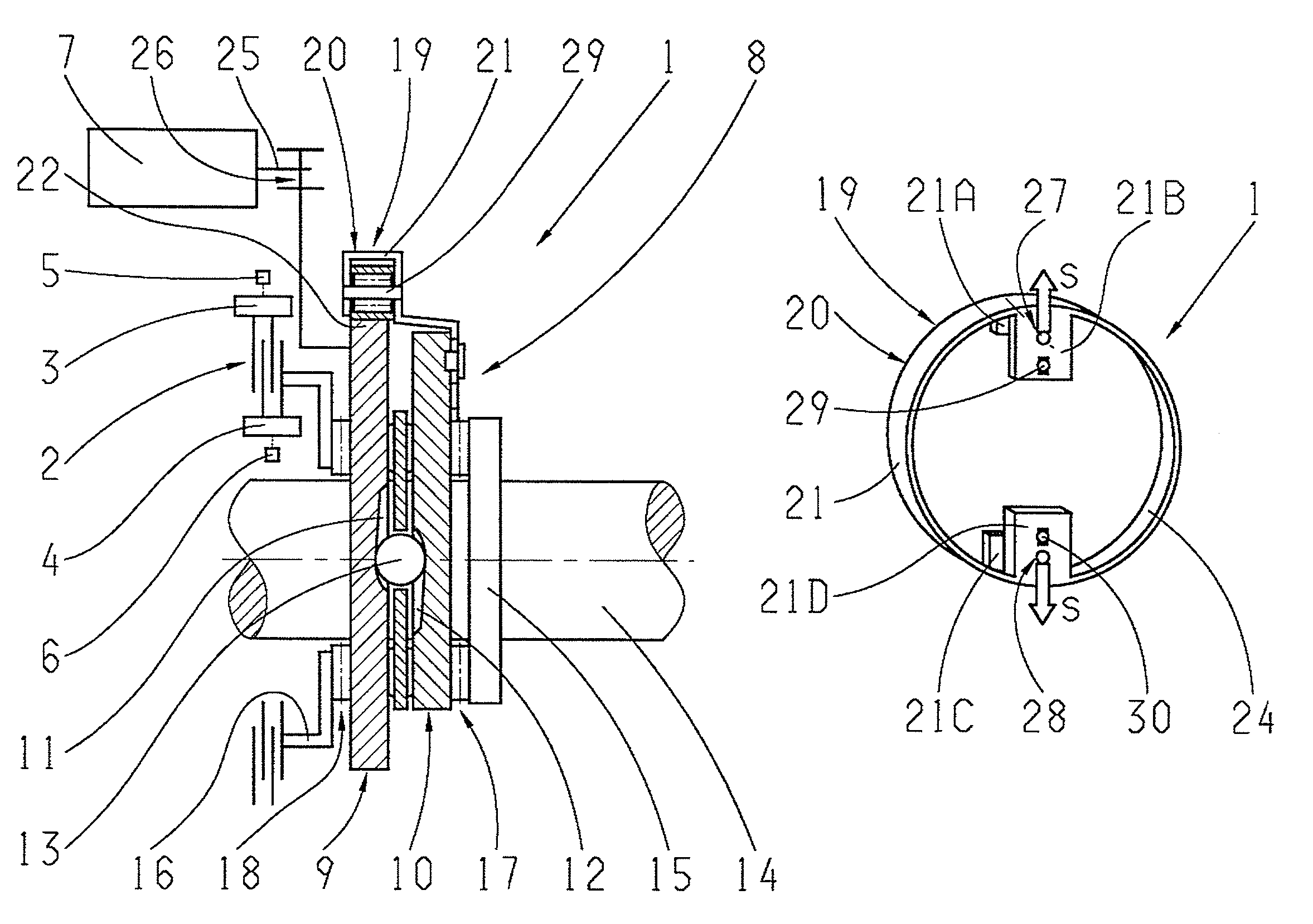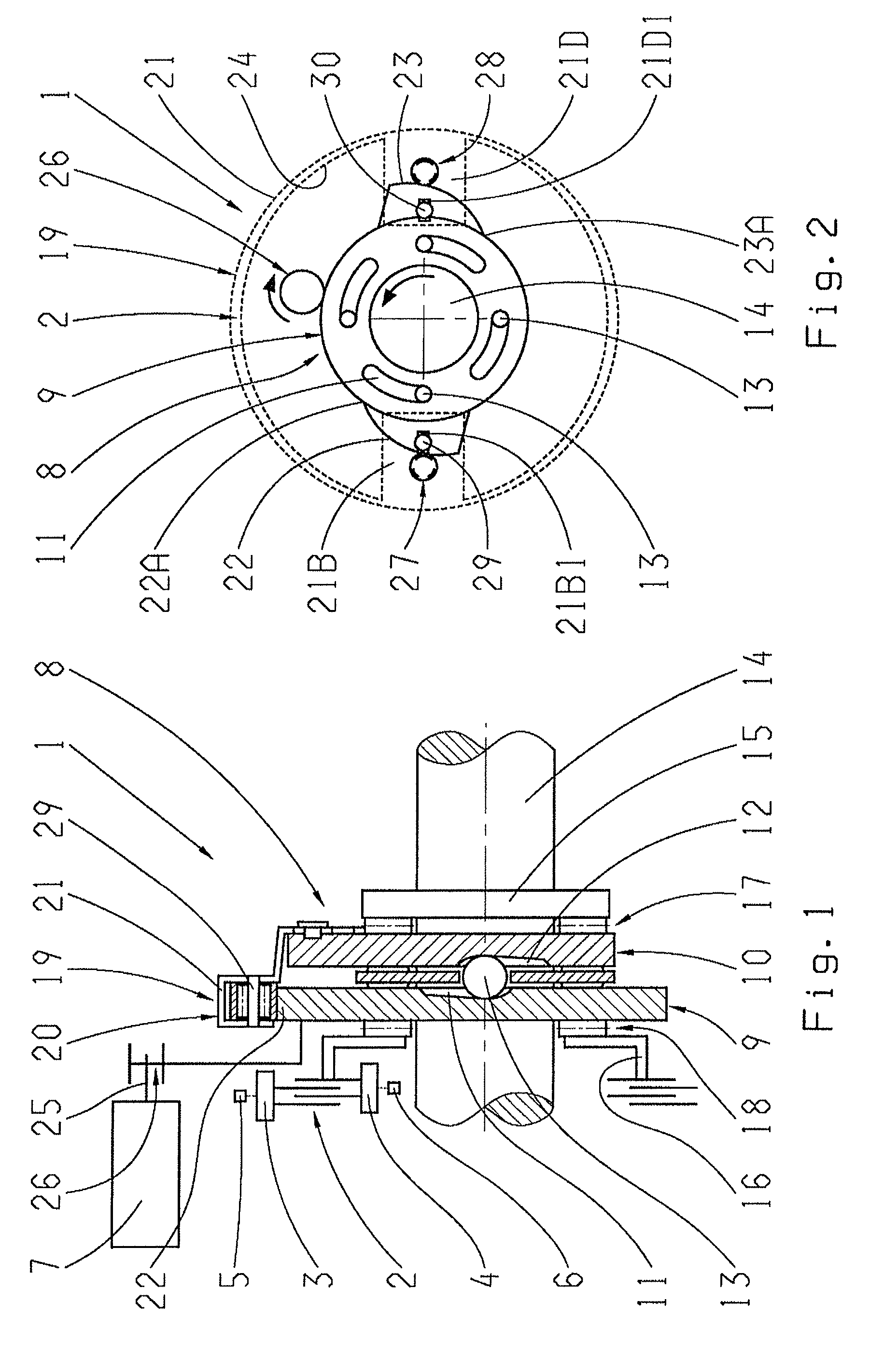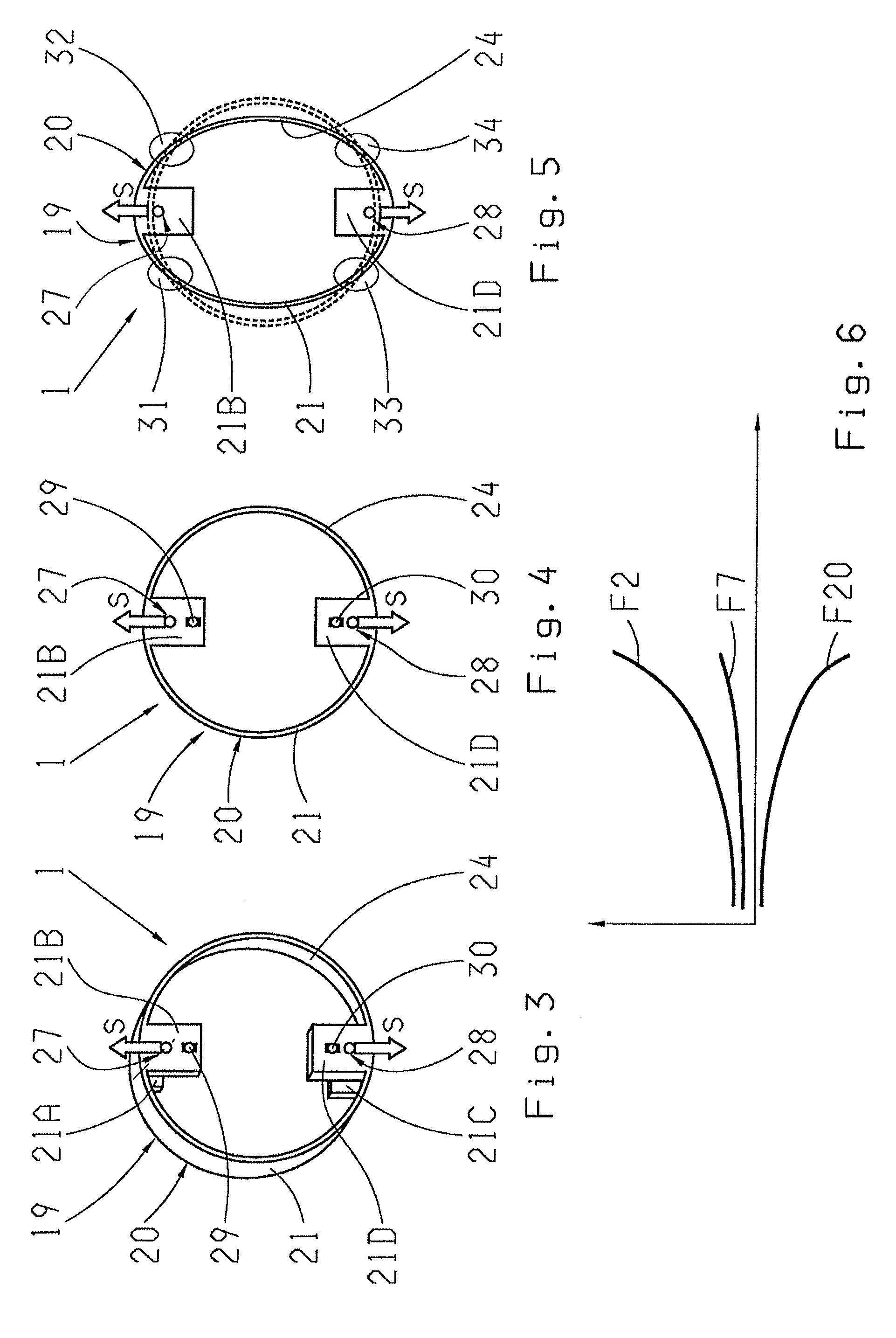Device for changing an operational status of a shifting element with two shifting element halves
a technology of shifting element and operating condition, which is applied in the direction of mechanical actuators, mechanical apparatus, interlocking clutches, etc., can solve the problems of increasing the fuel consumption of the vehicle, undesirable permanent current flow, and shifting element over its operating life, so as to achieve low cost, low cost, and efficient operation
- Summary
- Abstract
- Description
- Claims
- Application Information
AI Technical Summary
Benefits of technology
Problems solved by technology
Method used
Image
Examples
Embodiment Construction
[0044]FIG. 1 shows a mechanism 1 for changing an operating condition of a shifting element 2, in this case in the form of a frictional clutch, or for actuating the shifting element 2. The shifting element 2 has two shifting element halves 3, 4 which can be functionally connected with one another in order to connect two components 5, 6 or which can be disengaged in order to break the connection between the components 5, 6. In the present case the shifting element 2 or disk clutch is an all-wheel distributor clutch of an all-wheel vehicle drive-train, by means of which, as a function of the transmission capability set in each case, a drive torque provided by a drive motor of the all-wheel distributor transmission can be distributed with varying degrees of distribution between two driven vehicle axles of the all-wheel drive-train. In the fully open operating condition of the shifting element 2, the drive torque of the drive motor is transmitted completely in the direction of one of the...
PUM
 Login to View More
Login to View More Abstract
Description
Claims
Application Information
 Login to View More
Login to View More - R&D
- Intellectual Property
- Life Sciences
- Materials
- Tech Scout
- Unparalleled Data Quality
- Higher Quality Content
- 60% Fewer Hallucinations
Browse by: Latest US Patents, China's latest patents, Technical Efficacy Thesaurus, Application Domain, Technology Topic, Popular Technical Reports.
© 2025 PatSnap. All rights reserved.Legal|Privacy policy|Modern Slavery Act Transparency Statement|Sitemap|About US| Contact US: help@patsnap.com



